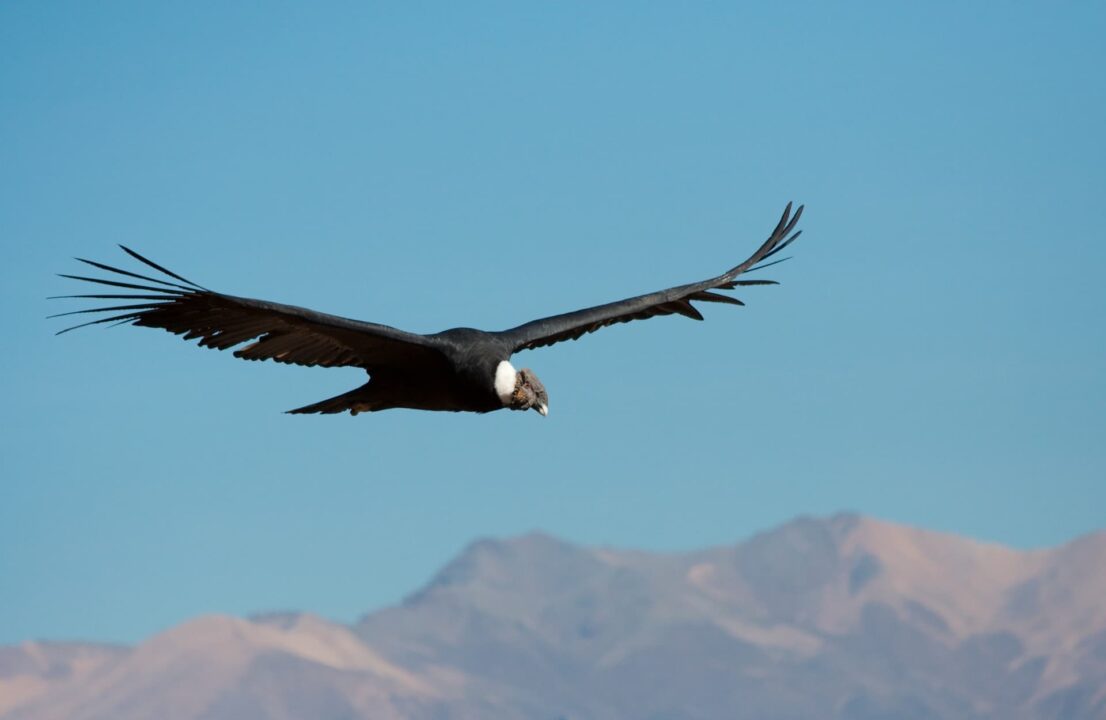

The mighty Andean condor (Vultur Gryphus) is an iconic species of South America, considered a cultural and natural treasure of the continent. In our country, these magnificent birds grace the skies along the Andean mountain ranges, soaring over provinces like Ayacucho, Arequipa, Apurimac, Lima, Ica, and Cusco.
As scavengers, condors play a vital role in ecosystems. By consuming carrion, they prevent the spread of bacteria that could cause diseases in humans. Their scavenging habits also help control populations of other scavenger species, maintaining a delicate ecological balance.
This colossal bird is among the largest flying creatures on Earth. Given its immense weight – up to 15 kilograms – even its vast wingspan, spanning up to 3 meters, requires a little help to keep it aloft. As such, these birds prefer to live in windy areas where they can glide effortlessly on air currents.
The Andean condors make their homes in mountainous regions, as their name suggests, but also near coastal areas rich with sea breezes, and even in deserts with strong thermal uplifts. Riding these airstreams, they soar majestically with hardly a flap of their wings.
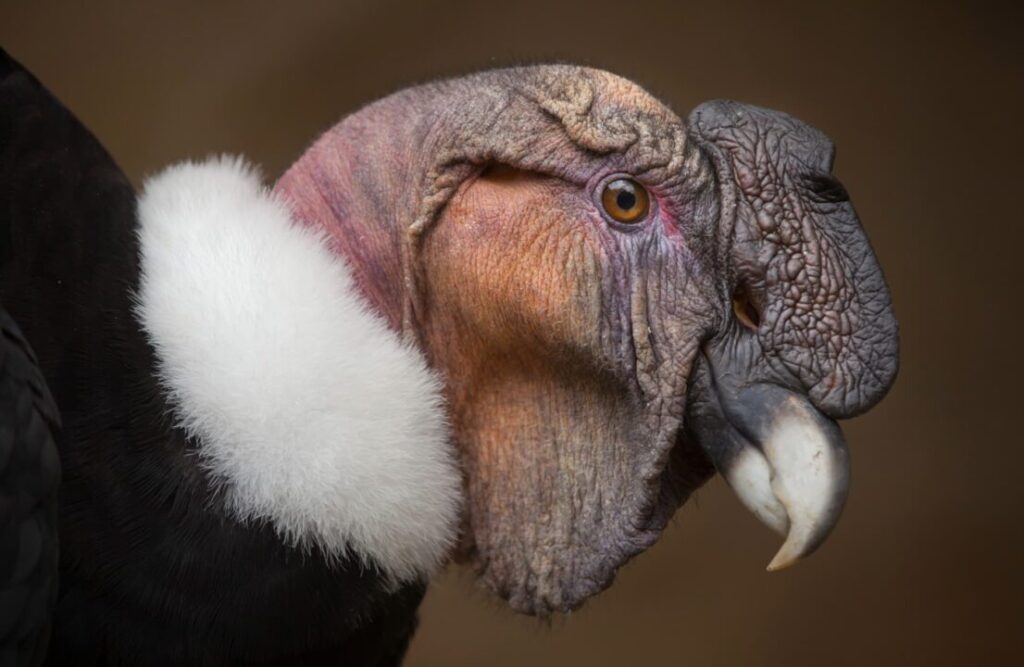
Recognized by its ruff of white feathers around the neck and wingtips, the Andean condor is also unmistakable for its bare, reddish head lacking feathers, much like its Californian cousin. Intriguingly, this bare head can change color according to the bird’s emotional state.
Beyond this curiosity, size also differs between the sexes in this species. Unusually for a bird of prey, the male condor is larger than the female.
These scavenging birds reach sexual maturity between 5 and 6 years old, nesting between 3 000 ft and 15 500 ft above sea level, usually favoring steep, inaccessible rock formations. Like the bearded vulture in Spain, they have an extremely low reproductive rate, typically laying just one egg every two years. In addition to their emblematic size and habitat, condors are among the world’s most long-lived birds, reaching up to 75 years in captivity.
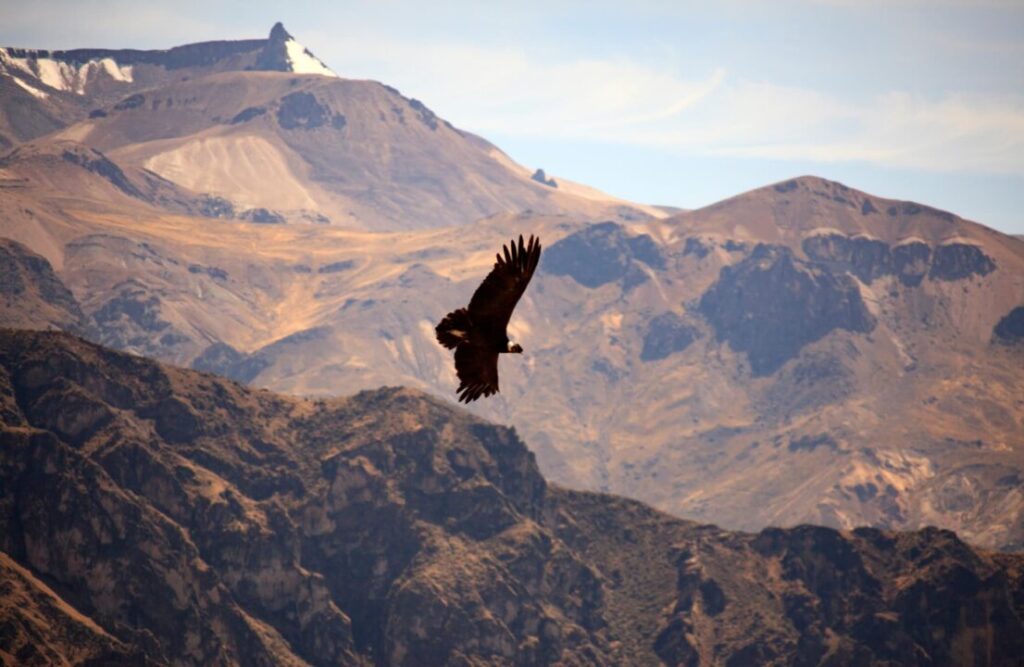
As vultures, condors rely on their keen eyesight to scan for carrion, which makes up the bulk of their diet. They prefer carrion from large animals, both wild and domestic, consuming their bodies in an important scavenging role as “nature’s cleanup crew.”
These scavengers locate their meals from afar but do not descend to feed immediately. Instead, they circle overhead or watch from nearby until conditions are right to approach. Condors can consume up to 5 kilograms of meat per day and can survive up to 5 weeks without food.
Along the coast, they feed on dead marine animals like seals or fish. While lacking the sharp talons of other predators, condors may raid nests for eggs or hatchlings.
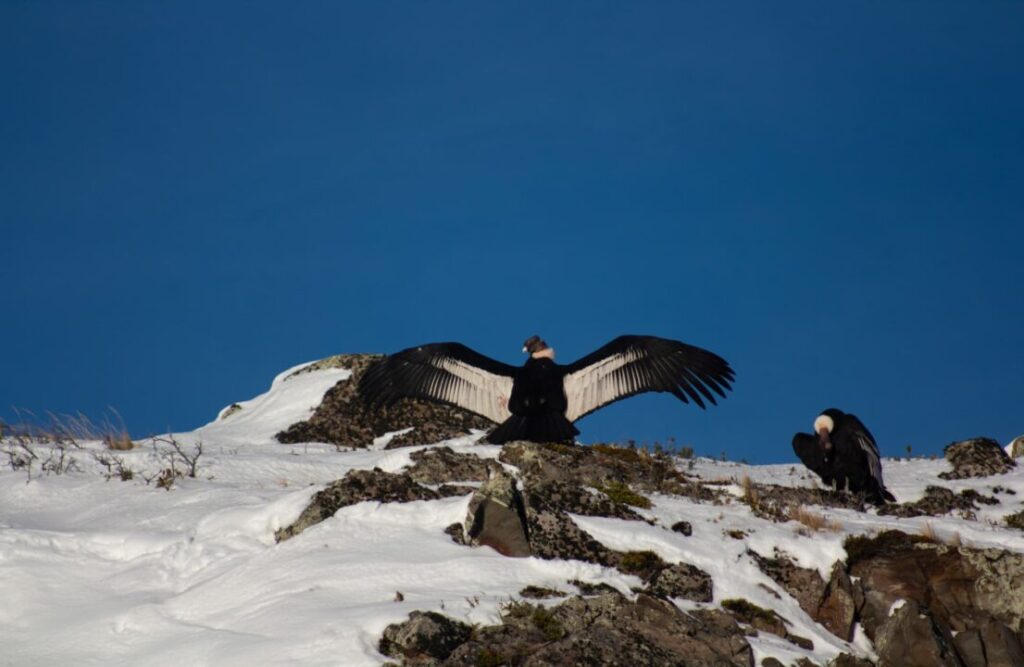
The Andean condor ranges along the Andes mountains in Venezuela, Colombia, Ecuador, Peru, Bolivia, Chile and Argentina. In a bit more of a year before, the Peruvian state organized a condors census to measure the distribution of Condors in Peru, the results were the following:
The condor inhabits mountainous terrain, soaring on air currents up to over 8000 meters high. While soaring it holds its wings horizontally with primary feathers spread like fingers. It can reach speeds up to 50 km/h. Solitary or in groups, it nests in rock crevices or caves, laying a single white egg roughly 109.5-118 x 62.8-76.5 mm in size.

The Andean condor is a threatened species, though its situation is better than its Californian cousin. The IUCN lists it as Vulnerable due to population declines from habitat loss and poisoning from scavenging intoxicated animals or illegal poison baits set by hunters and ranchers.
There are now only a few thousand Andean condors left in the wild, and reintroduction programs aim to boost their numbers. Sightings have become extremely rare in Venezuela and Colombia where populations have plummeted most drastically.
With their low reproductive rate, the species is extremely vulnerable to human activity, especially from farmers who view them as a threat to livestock despite conservation education efforts. Persecution remains a serious problem. Reintroduction programs release captive-bred condors to bolster populations in Argentina, Venezuela and Colombia.
This captive-breeding system began in 1989 with the first releases of condors raised with minimum human contact. Chicks are hand-puppet-fed to avoid imprinting on humans which could endanger them upon release.
Finally, the condors spend three months in outdoor aviaries acclimatizing to a naturalistic environment before being freed to the wild.
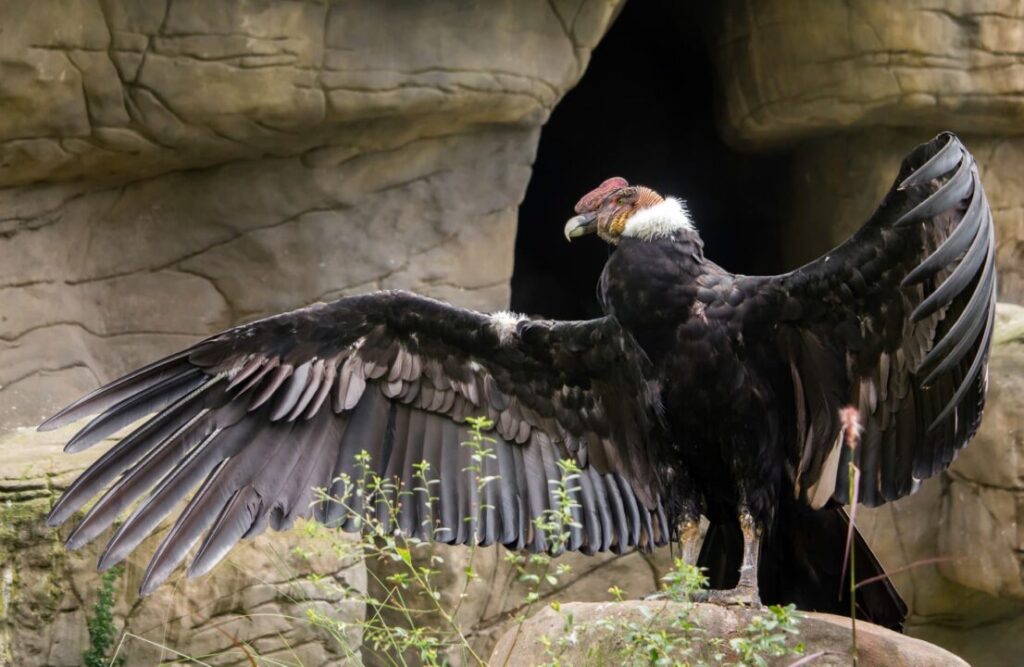
The Andean Condor is certainly one of the most fascinating species that one can encounter while visiting the many Andean countries that share this natural phenomenon which allows these unique species to cohabit throughout this accidented region.
Peru Jungle Trips offers the best touring experiences in Cusco’s region and Peru on its totality.
Contact us and explore the Andes and the Amazon in Peru.
Do not hesitate to give us a call. We are an expert team and we are happy to talk to you.
+51 998 134 635
info@perujungletrips.com
